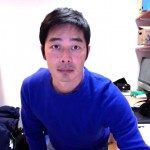Link to Pubmed [PMID] – 23674673
Link to DOI – 10.1073/pnas.1303858110
Proc Natl Acad Sci U S A 2013 May; 110(22): 9090-5
CD8(+) T cells are specialized cells of the adaptive immune system capable of finding and eliminating pathogen-infected cells. To date it has not been possible to observe the destruction of any pathogen by CD8(+) T cells in vivo. Here we demonstrate a technique for imaging the killing of liver-stage malaria parasites by CD8(+) T cells bearing a transgenic T cell receptor specific for a parasite epitope. We report several features that have not been described by in vitro analysis of the process, chiefly the formation of large clusters of effector CD8(+) T cells around infected hepatocytes. The formation of clusters requires antigen-specific CD8(+) T cells and signaling by G protein-coupled receptors, although CD8(+) T cells of unrelated specificity are also recruited to clusters. By combining mathematical modeling and data analysis, we suggest that formation of clusters is mainly driven by enhanced recruitment of T cells into larger clusters. We further show various death phenotypes of the parasite, which typically follow prolonged interactions between infected hepatocytes and CD8(+) T cells. These findings stress the need for intravital imaging for dissecting the fine mechanisms of pathogen recognition and killing by CD8(+) T cells.

